How to Use Prior Art References Found in Quality Insights
In Quality Insights, there are four types of prior art references. It is suggested that the prior art references in Quality Insights are reviewed in the following order:
Rejection Prior Art
The Prior art references cited in the prosecution history and post-grant proceedings, they are usually cited based on 35 U.S.C § 102 and § 103.
Family Prior Art
The Prior art references cited by simple patent family members.
Second Degree Art
Additional prior art references based on 35 U.S.C § 102 and § 103. They are the references that are considered in the prosecution history and post-grant proceedings.
Semantic Prior Art
The top 300 US, EP, CN, JP, KR, and WO patents with the highest semantic similarity to the abstract and the patent’s first claim.

1: Rejection Prior Art
It is highly recommended that the rejection prior art references are reviewed first; this will ensure that the gist of the claimed invention is fully understood as this may contribute to both the claim interpretation and the focus of the prior art search. It's worth noting that this is especially important if you haven't already reviewed the file wrapper of the patent at issue.
The rejection prior art references are listed in the Overview tab and are presented as the § 102 and § 103 references, respectively. It is taken for granted that the § 102 references in the post-grant proceedings and the prosecution history pose the greatest threat to the validity of the patent at issue.
In addition to reviewing the rejection prior art references in the Overview tab, there is also a shortcut for reviewing rejection prior art references specifically related to the claims at issue.

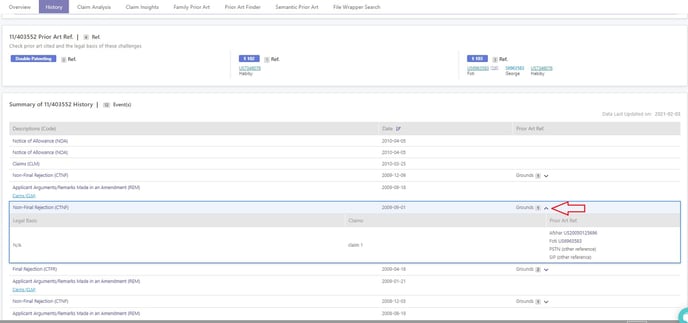
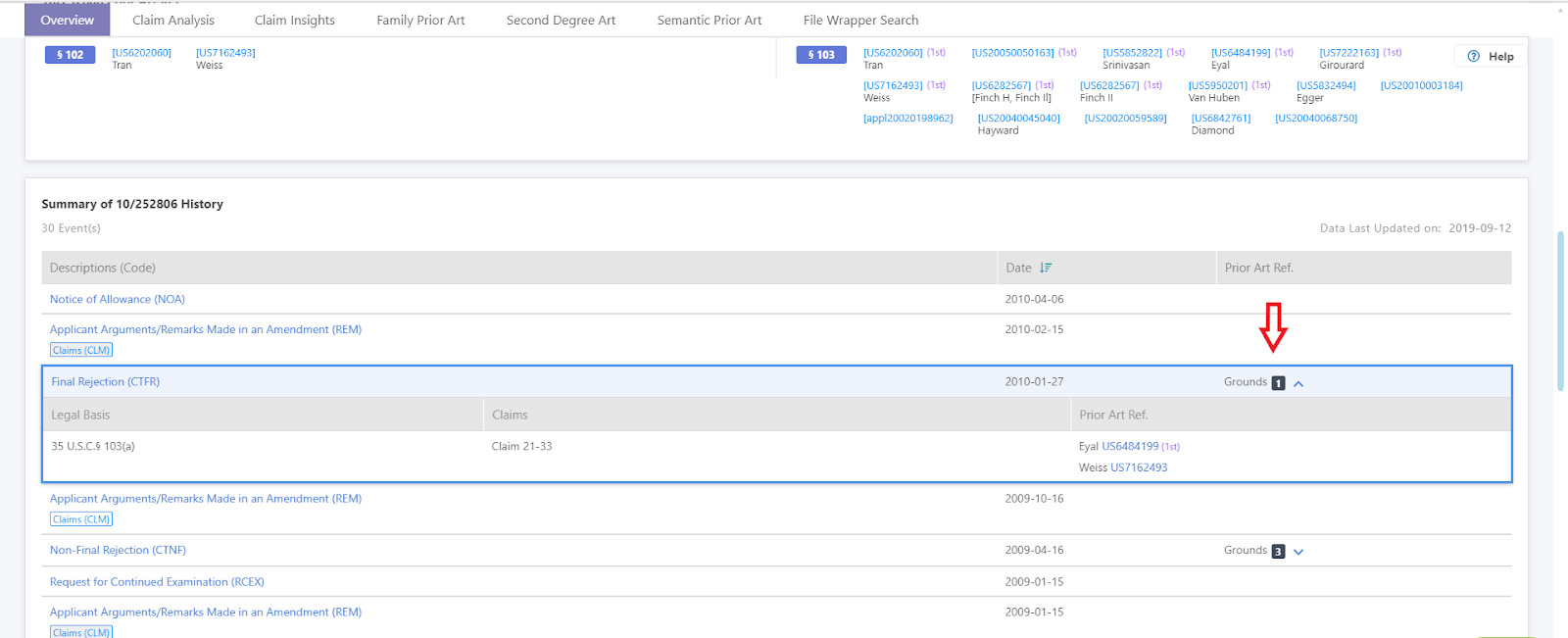
In the Claim Insights tab, you can see how the rejection prior art references are related to the claims of the patent. By selecting the claims at issue, you will gain access to the rejection prior art references related explicitly to them. The table also lists how the rejection prior art references are related to the claims at issue, enabling you to perform a quick evaluation of the rejection prior art references.
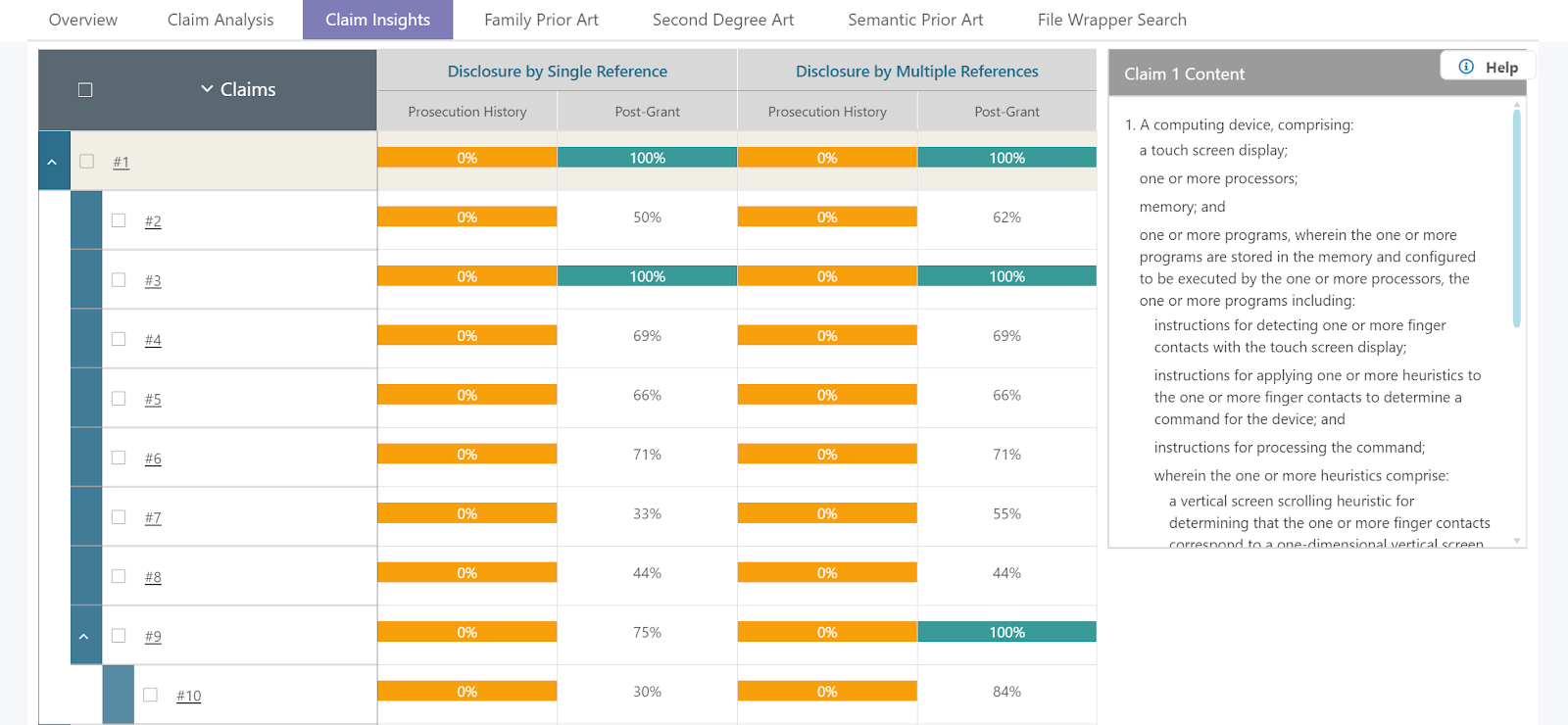
You can also see further comparisons between the claim elements and the references in Claim Insights based on the examiner’s opinion in the file wrapper. 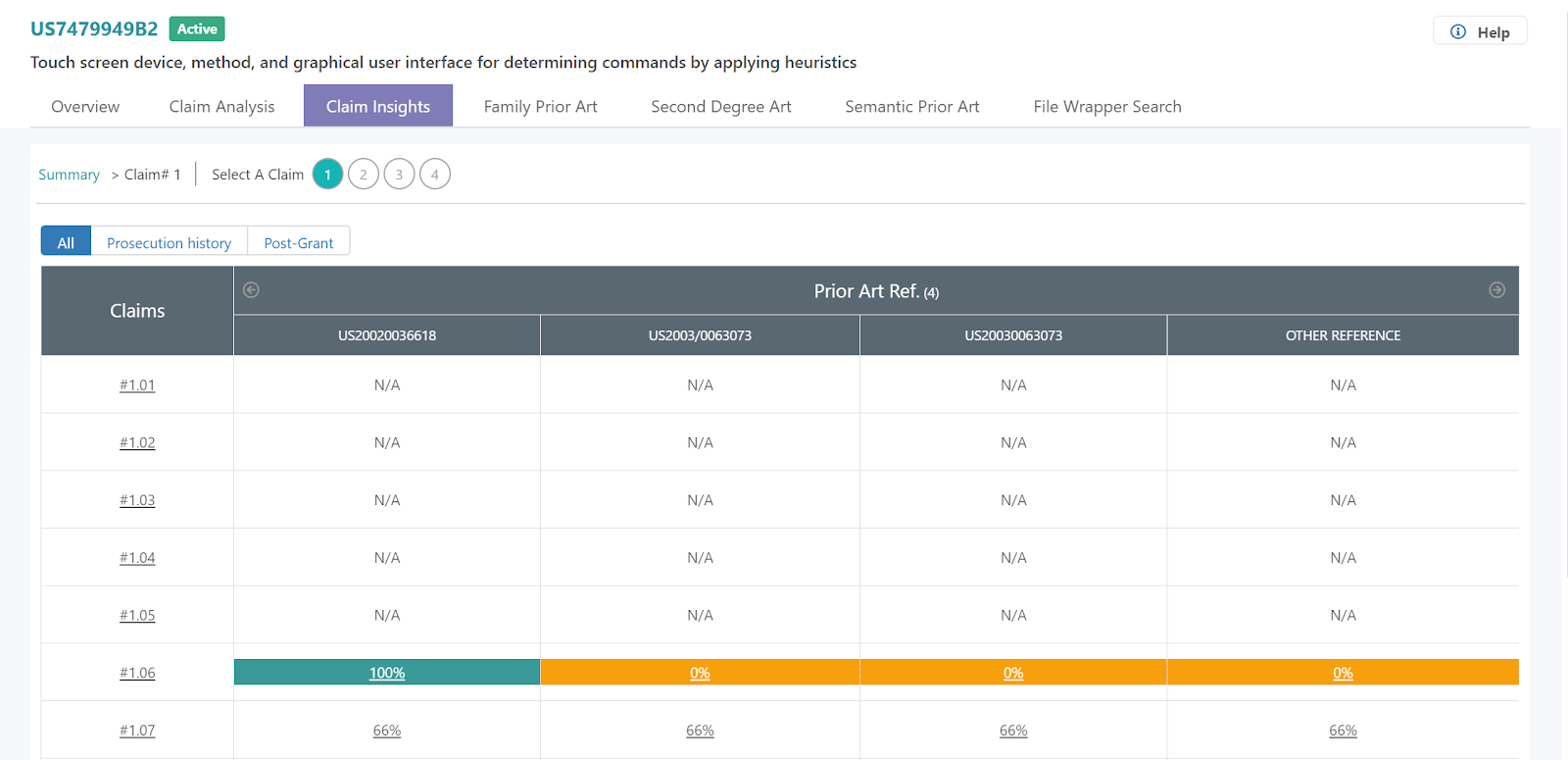
By reviewing Claim Insights, you can gain an understanding of the rejection prior art references and their relevance to the current patent claims.
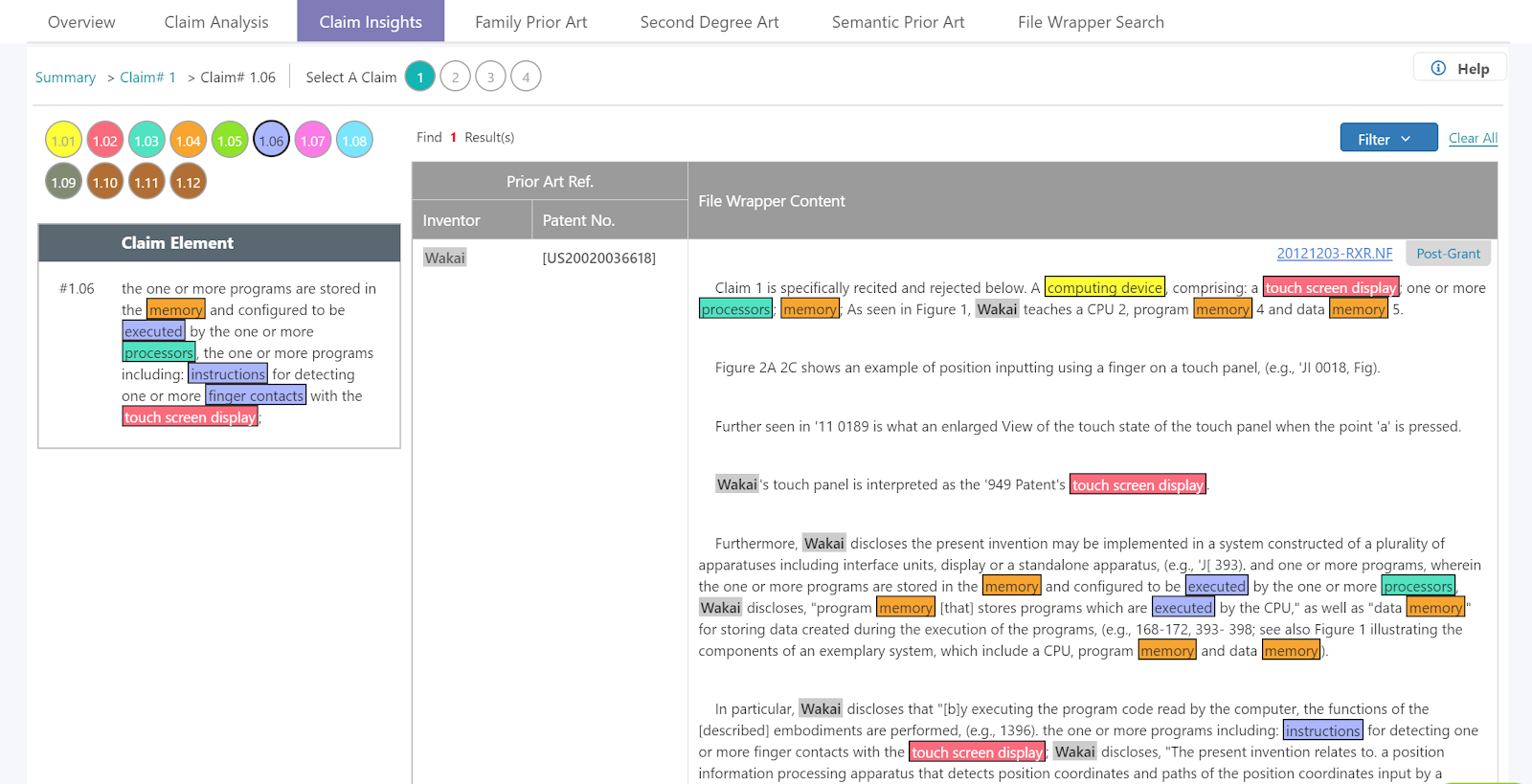
2: Family Prior Art
The family prior art references are provided in the Family Prior Art tab, and it is recommended that they are reviewed just after the rejection prior art references. However, if you have already reviewed the file wrapper of the patent at issue before visiting Quality Insights, it is suggested that you can also start from the family prior art references, especially if you haven’t reviewed all of the file wrapper contents of the family members of the patent at issue.
There are often hundreds of references provided in the Family Prior Art tab, you can find a dashboard that divides the family prior art references into different categories for convenience.

You can find the most important references by selecting them based on the following criteria:
Applicable
The applicable references are calculated by checking the prior art eligibility defined in (pre-AIA or AIA) 35 U.S.C § 102.
Abandoned Members
The references from abandoned members are those family members that have not overcome rejections and have caused the applicant to abandon the application instead of filing a response to the rejection.
Family Members Novelty or Non-obviousness References
The novelty (35 U.S.C § 102) or non-obviousness (35 U.S.C § 103) references are usually deemed to be more relevant because they were provided by the examiners as well as detailed comparisons in the rejections or search reports.
Other references in the Family Prior Art tab may still be useful (except for references not applicable as prior art) when it comes to invalidating the patent at issue. Based on InQuartik’s survey of the prior art hit rate, which was based on more than 5,000 USPTO PTAB cases, the references in the Family Prior Art may be relevant enough to constitute invalidation grounds with around a 40% chance of instituting a PTAB case.
However, it may be more useful and efficient to review the tens of references in the Second Degree Art tab than to review the hundreds of other references in the Family Prior Art tab.
3: Second Degree Art
The second-degree art references are provided in the Second Degree Art tab, and it is recommended that you review them after the important family prior art references. However, if you have already reviewed the file wrappers of all the family members of the patent at issue before visiting Quality Insights, it is suggested that you can still get started from the second-degree art references.
Based on the definition of second-degree art, there are usually minimal references in the Second Degree Art tab. By focusing only on applicable references, often you can find the most important second-degree references.
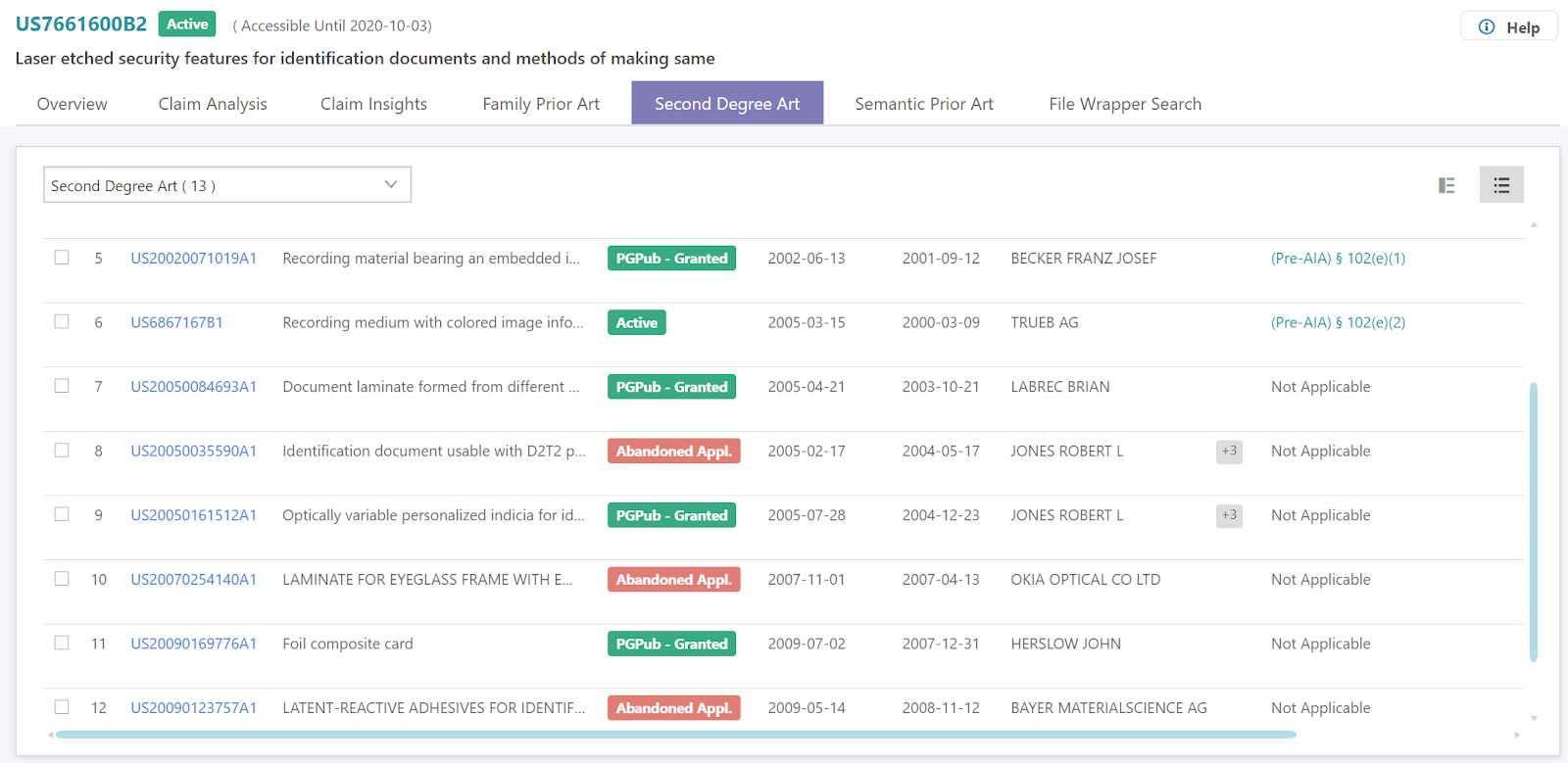
4: Semantic Prior Art
Before reviewing the semantic prior art, from the perspective of the prior art hit rate measured by InQuartik, reviewing all of the family prior art references in advance would be recommended; this is due to the x3 hit rate of PTAB institution from the family prior art references.
In the Semantic Prior Art tab, references are provided based on the relevance between the references and the patent at issue. Therefore, it is worthwhile reviewing the references in order from first to last.
However, after reviewing the previous references, you may find some limitations which should be considered first. You can put all of the semantic prior art references (possibly along with the family prior art references) into Patentcloud’s Patent Vault to enable keyword searches to find the references disclosing the limitations which you consider to be more important.